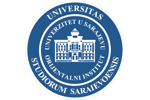A Contribution to the Study of the History of Fojnica and Kreševo From the Establishment of Turkish Rule Till the Beginning of the 17th Century
Abstract
The present paper follows the development of Fojnica and Kreševo from the time of the establishment of Ottoman rule tjll the beginning of the 17th century, that is their urban, demographic, and economic development. The pap~r is based mainly on published andunpublished sources of Ottoman origin, primarily on land-registers for the Bosnian sanjak from the years 1468/9, 1485, 1489, 1516, 1528/30, 1540/42, 1570, and 1604, as well as on the. available literature.
The basis of the origin and subsequent economic prosperity of these settlements, were mining and manufacture based on mining, dating back to the 14th century. When Ottoman rule was established, the continuity of exploitation of the mines in the Fojnica and Kreševo basins was uninterrupted. For the Ottoman state too those two settlements' were primarily important as mines of silver and precious metals.
The transformation of Fojnica and Kreševo into settlements of Islamicoriental type was very slow, because of both the activity of the Catholic church and the attitude of the Ottoman state towards the mining settlements. Fojnica first acquired the characteristics of an Islamic-oriental town, in the second half of the 16th century, while Kreševo did so as late as the end of the same century.
Population data taken from the land registers for the Bosnian sanjak till the beginning of th 17th century, indicate a steady decline in the number of inhabitants in those two mining communities. According to the land registers of 1468/9, Fojnica was in population the largest settlement in the Bosnian sanjak, after Novi Pazar. In the same year, 329 households were registered in Fojnica, and 299 in Kreševo. Since that time, there was a steady decline in the number of inhabitants in both Fojnica and Kreševo. At the beginning of the 17th century there were 142 households in Fojnica, and 112 in Kreševo. The causes of this demographis decline are varied. Owing to the development of new administrative and economic centres such as Sarajevo and Novi Pazar, Fojnica and Kreševo lost their former importance, so that the population migrated in search of better sources of livelihood. The continual extensive wars tn,at the Ottoman Empire waged throughout the 15th and 16th centuries, as well as epidemics of infectious deseases, were also reasons for the depopulation of these towns.
After Ottoman rule had been established, the confessional structure of the population changed. The Moslem population of these towns was mostly created by the conversion of the Christian population to Islam. After the beginning of the 17th century the process of islamization, both in Fojnica and Kreševo, was slight.
Mining occupied a dominant place in the economy of Fojnica and Kreševo. On the basis OI the data offered by the land registers, it can be seen that silver and copper were mined in the Fojnica basin in the 15th century, while only silver was mined in that of Kreševo. In the course of the 16th century silver, gold, copper and lapis lazuli were extracted from these mines. In the second half of the 16th century stagnation in production set in these mines, especially in respect of silver. According to the census of 1570, the mining of silver-ore at Fojnica was discontinued, while mining at Kreševo continued. At the benning of the 17th century, silver mining at Fojnica was resurned.
Trade and crafts were important parts of the Fojnica and Kreševo economies. As early as pre-Ottoman times, Fojnica was a market-town where important commercial transactions took place. Dubrovnik merchants played a main part in the trade of Fojnica and Kreševo. Imports and exports developed through the trade with Dubrovnik merchants. The main export articles were the products arising from cattle-breeding, and the articles imported, were various kinds of consumer goods, primarily textiles of different kinds.
Certain trades had a tradition going back to the pre-Ottoman period. In the first decades of Ottoman rule in Fojnica, bakers, furriers and shoemakers enjoyed certain privileges. Besides these, some other trades, such as tanning, tailoring, butchery, smithing, as well as some other trades based on the needs of the population, were also developed in Fojnica and Kreševo.
Agriculture was an auxiliary occupation in·Fojnica and Kreševo. Besides vegetables, the population primarily grew cereals - wheat, barley, millet, rye, buckwheat, and oats.
Bee-keeping and cattle-breeding were also occupations of the inhabitants.



